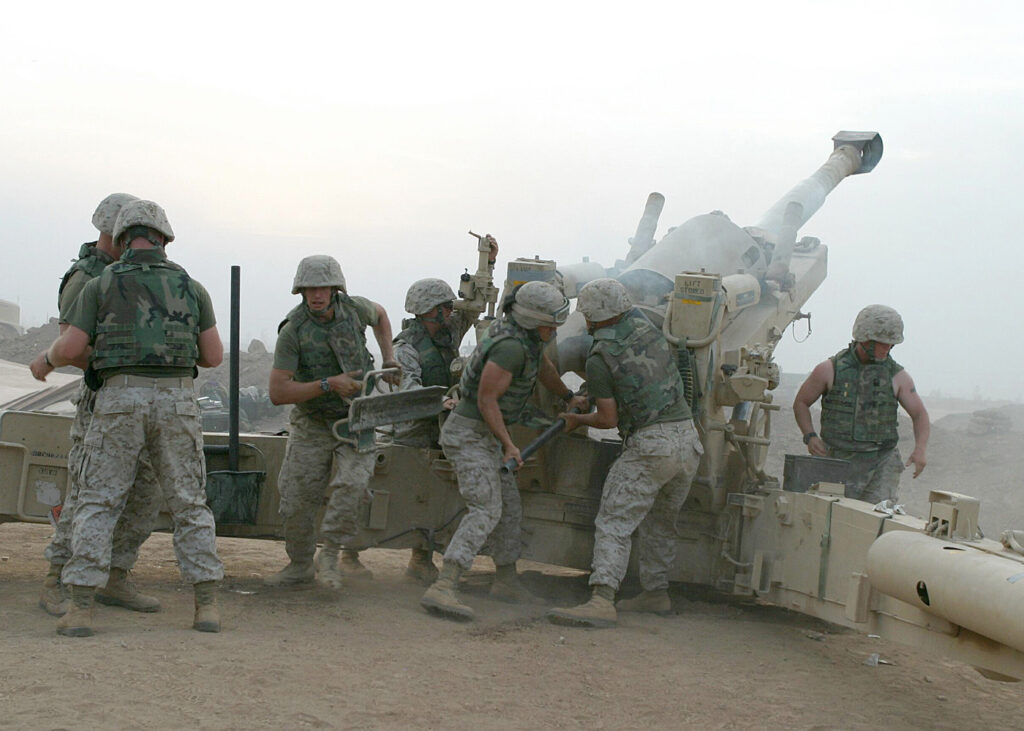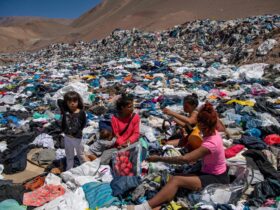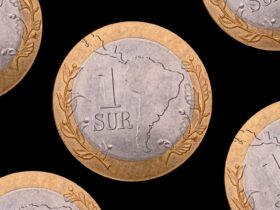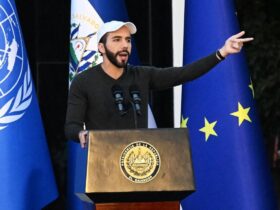Re·frac·tion (/rəˈfrakSH(ə)n/) Noun. Physics: Change in direction of propagation of any wave as a result of its traveling at different speeds at different points along the wave front.
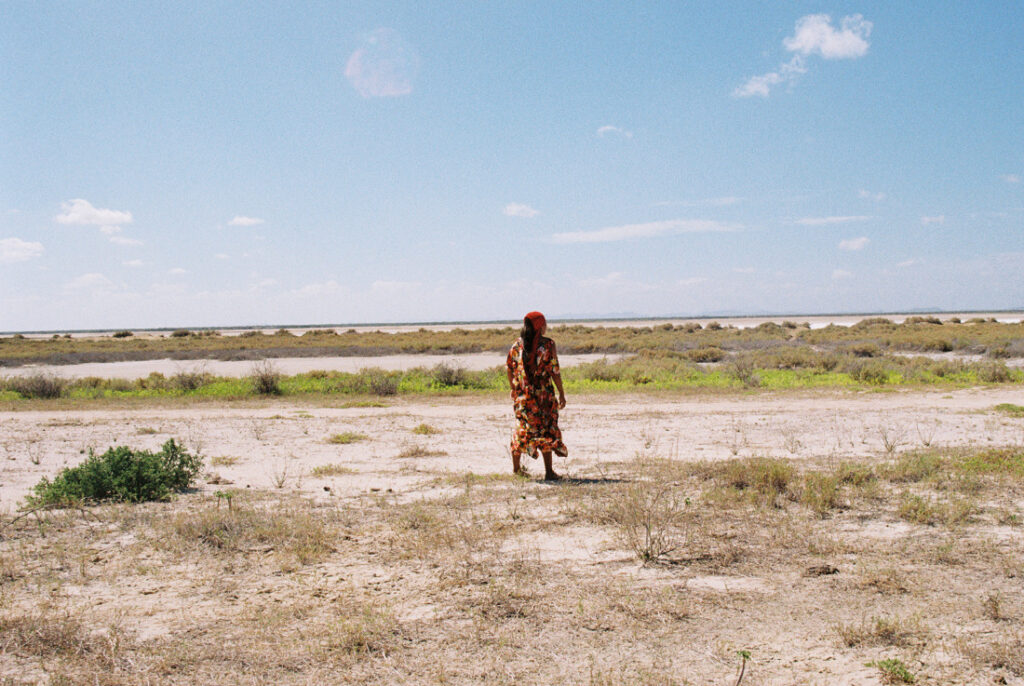
Josefa Barliza gazes off into the distant deserts of La Guajira, Colombia during a midday stroll. With an arid and scorching desert for hundreds of kilometers, La Guajira is one of the driest regions of Colombia with less than 400mm of rain per year. However, life always finds a way.
I wake up with the sunrise. The warm sunbeams start filling up the gaps in the palm roof of the artisan center of an Indigenous village at the doorstep of the Caribbean. As I roll over inside a hand-woven, red and green chinchorro (hammock) I can feel the temperature start to rise. With every degree increase, the intensity of the light touching my eyes becomes more unbearable. So I wake up. I put my feet down on the sand, and walk. Just a couple of meters off the wooden gates of Arema, I find myself being struck by the high-speed salty winds coming from the East. As my hair covers my face and the strength of the sun pierces through my skin, I make my way forward.
Not even 100 steps from my hammock I find myself on the beach, surrounded by nothing but desert, shrubs, cacti and sand. The only water that I am certain to see for kilometers is in front of me; and the only light I will have for the rest of the day is above me.
Light and Water
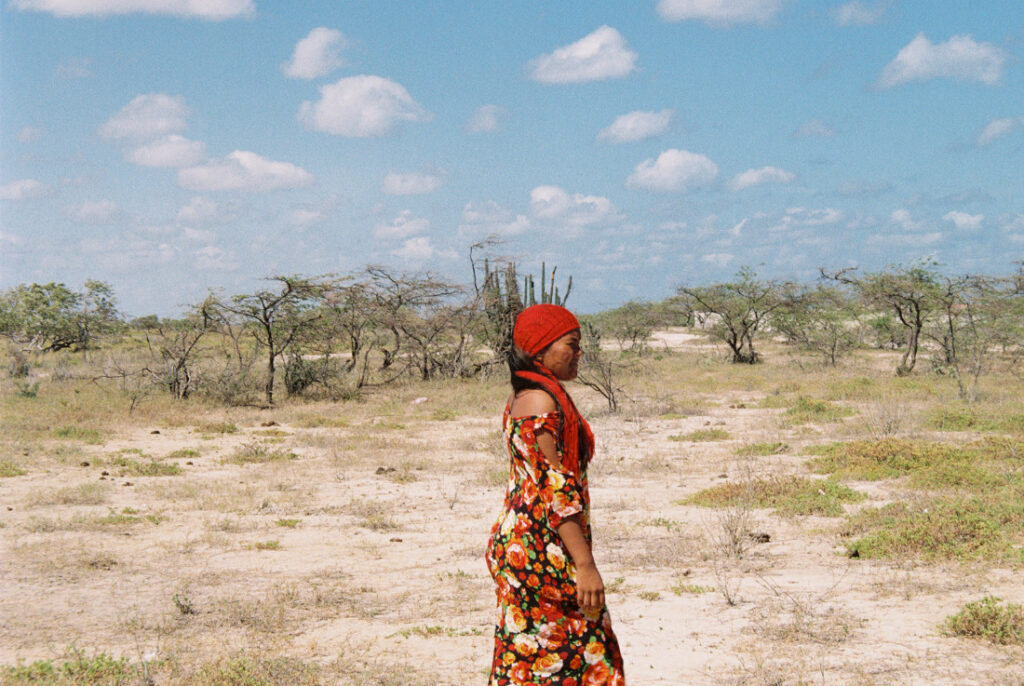
The region is home to the Indigenous Wayuu people. Dressed in colorful attires they live their lives trying to tame the desert and reaping every benefit they can from the inhospitable environment. Josefa Barliza is one of the most outspoken members of the community. Her goal is to use technology and social media to put Arema and Wayuu culture on the map.
Refraction is the phenomenon physicists attribute to the shifting direction of waves when they change mediums. It applies to light, water, and metaphorically, to people. As new challenges arise or progress is made, environments and circumstances change, which leads people to go in different directions, and sometimes, change their lives entirely. Arema embodies this. A paradigm shift. A radical change in the way they will live for generations to come.
The small coastal indigenous Wayuu community of Arema, located in La Guajira, Colombia, is about to get a new set of solar panels and batteries installed. This will change the way the community interacts amongst themselves, with nature and others in the region.
However, this is not the first time Arema faces change. The directions of the village and its inhabitants as individuals shift with the landscapes and nature, coexisting, embracing and adapting to change; just like the waves around them.
Light and water are critical for the survival and progress of Arema and surrounding communities. However, the lack of accessibility to these resources creates uncertainties that locals have to deal with on a daily basis. Not knowing when water shipments will come, when it will rain, when you will be able to take a trip to the nearest town to charge your phone, if you will even be able to finish your work before it gets pitch dark to pay for things.
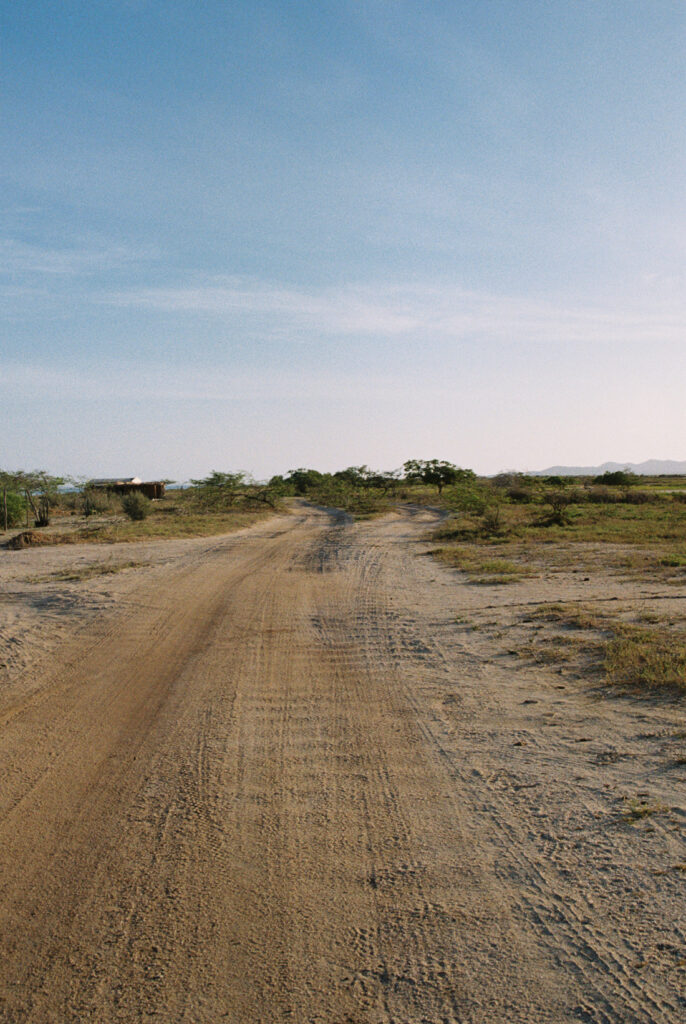
The roads that lead to Arema are covered in sand, mud and dirt. With no paved roads, most communities are connected by these makeshift streets that allow for access, but severely limit the travel time and size of transportation that can reach these areas.
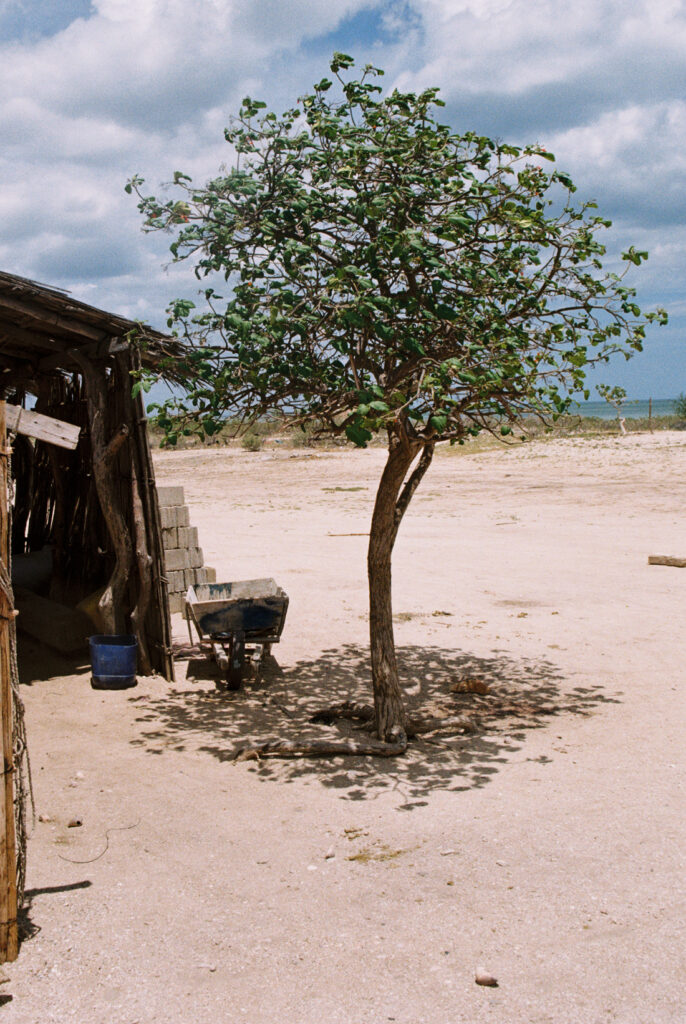
Houses in Arema are built out of tree branches, and other wood. Roofs are traditionally made of palm, but some have adapted the use of tin roofing, with only the wealthiest being able to afford concrete and bricks. Having a sturdy and durable roof is key to remain safe from the sun and the blazing temperatures that reach average highs of 35 °C.
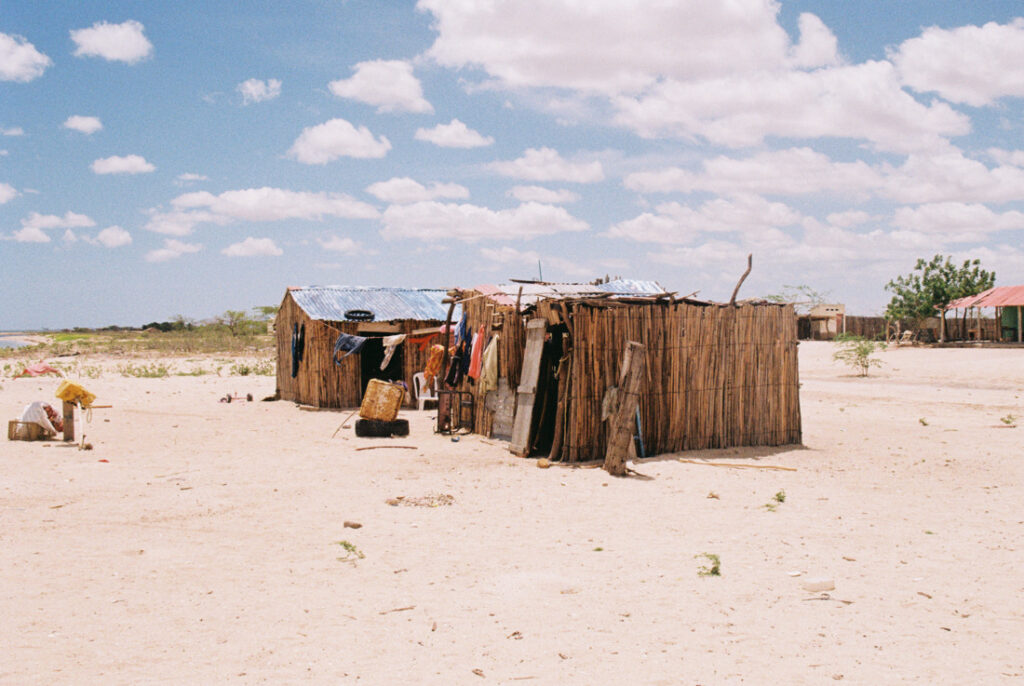
Water jugs are one of the most precious possessions for the Wayuu. In this inhospitable desert, the only access to drinking water comes from water trucks or rain water, and to store this water, they need several and sometimes massive water jugs around their houses.
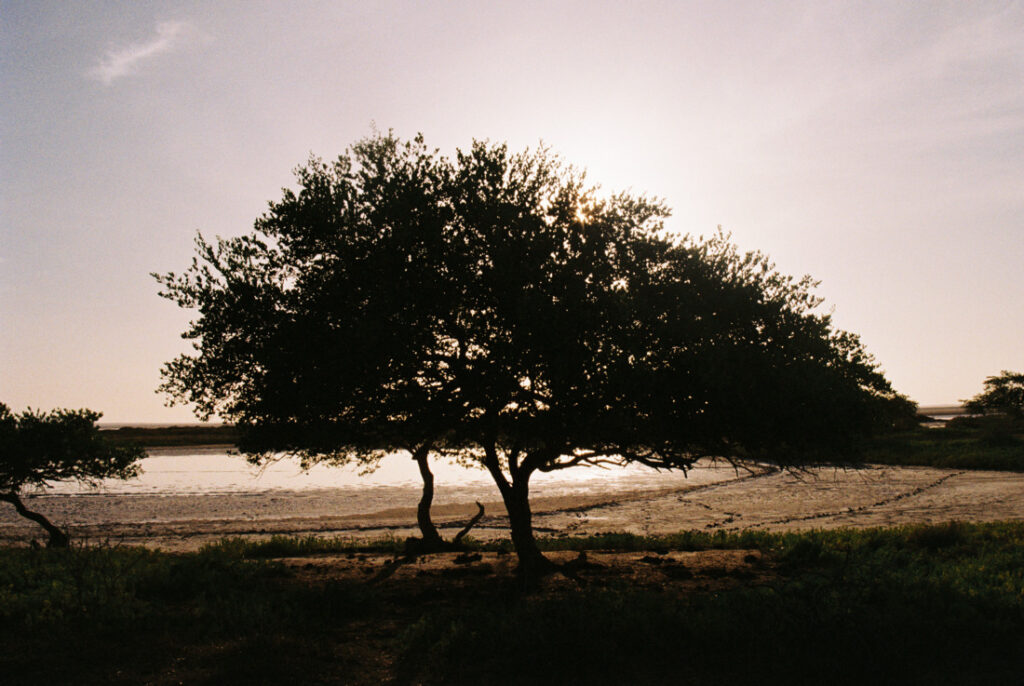
Jagüeys are large manmade pools of water that are used by the Wayuu people to store rainwater. Not only do they provide fresh water for their communities, but they also serve as social hangout spots where the community (specially young people) gets together to socialize.
Jagüeys are protected because they are the only places where we have water. If our jagüeys dry up and we find ourselves without water, that is where the drought and therefore our suffering begins.
Josefa Barliza
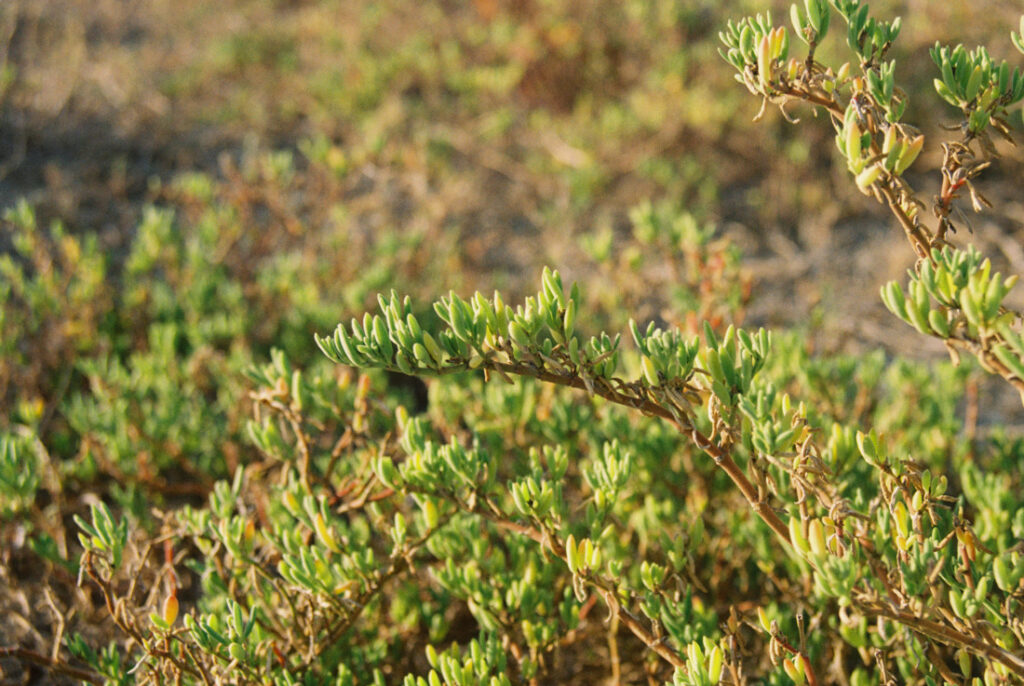
Despite the heat and sand, a lot of vegetation can be found in La Guajira. Between trees and smaller plants, vegetation feels the empty desert with some color. Important for shade, resources and braking monotony, the flora found close to Arema coexists with the environment alongside its inhabitants.
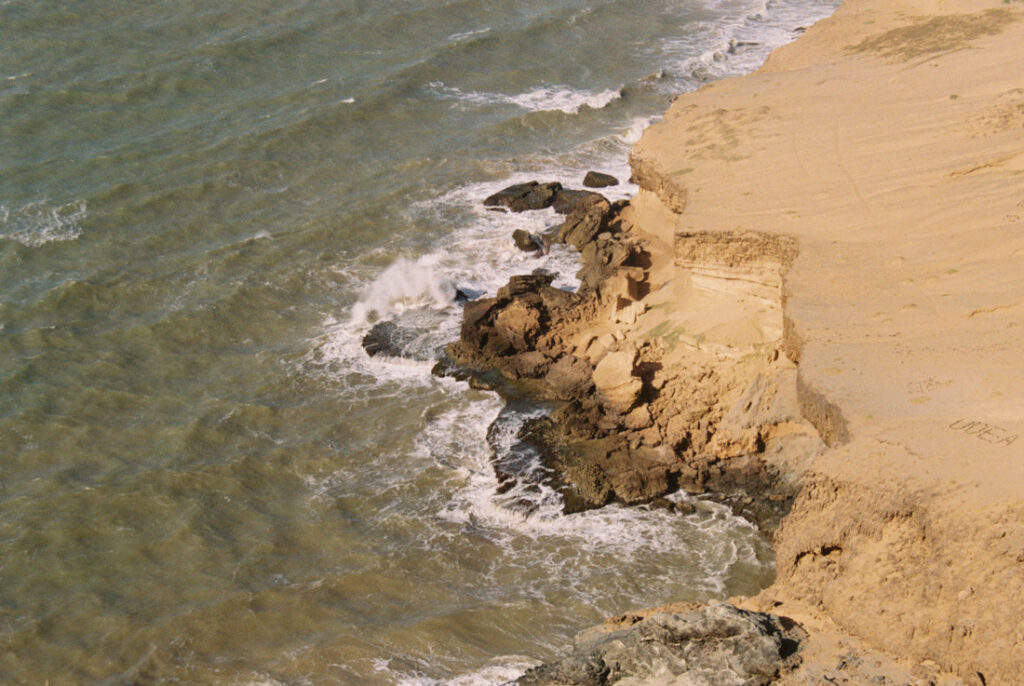
Taken from the “Cerro Pilón de Azúcar,” one can see the extreme conditions that locals have to endure. Yet, these extreme conditions yield strong character, and the Wayuu people are not the exception. between barren land and untamable oceans, the indigenous communities of La Guajira seek to find stability within these changing times, preserving the past and embracing the future.
Light, for us, is something sacred. The sun’s light accompanies us in this desert, while at night it is with us through the moon; and it illuminates the paths that we have to take while keeping us safe from evil.
Josefa Barliza
La Guajira is the ultimate embodiment of juxtaposition. Where big desert dunes meet the clear turquoise Caribbean Sea. Where there’s so much water, yet none to drink. Where there is so much light but no way to keep it. Every day lived is a fight won, and the way that locals brave the extreme and unfavorable conditions to not only survive, but thrive, is a sight to behold.
Salt
Although ocean water and sunlight are not easily accessible to use, they both come together to provide for the community through their mutual collaboration.
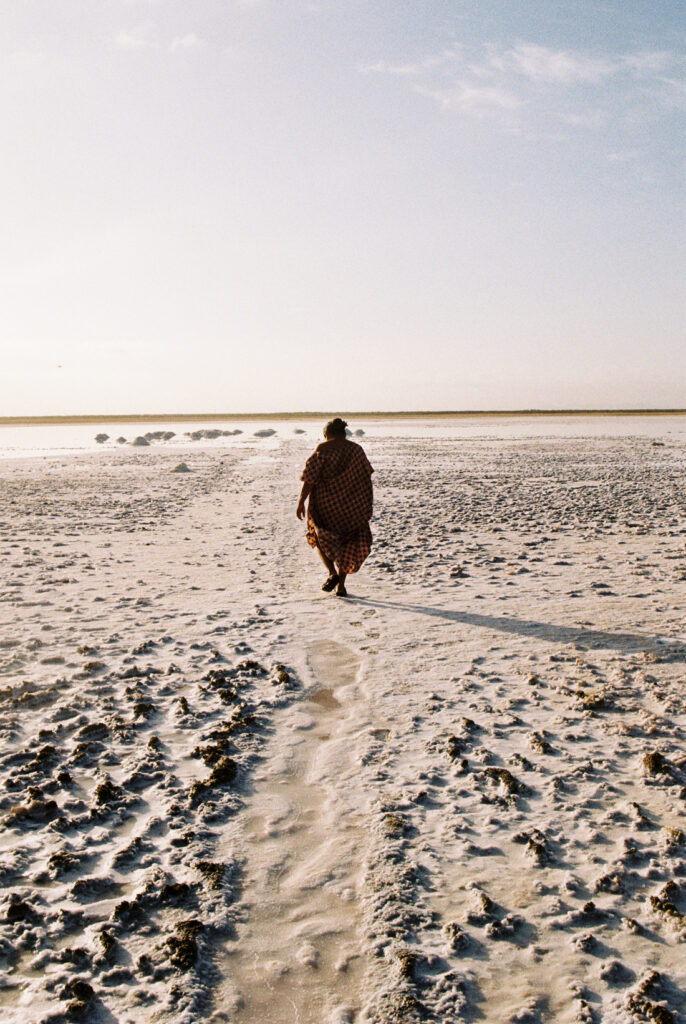
Maria Luisa Barliza Ipuana is the leader of Arema. As the head of the village her days mostly consist of passing down what she has learned through decades of experience. When she is not sewing or taking care of her grandchildren, her mornings start at 6 a.m. She heads into the salt flats.
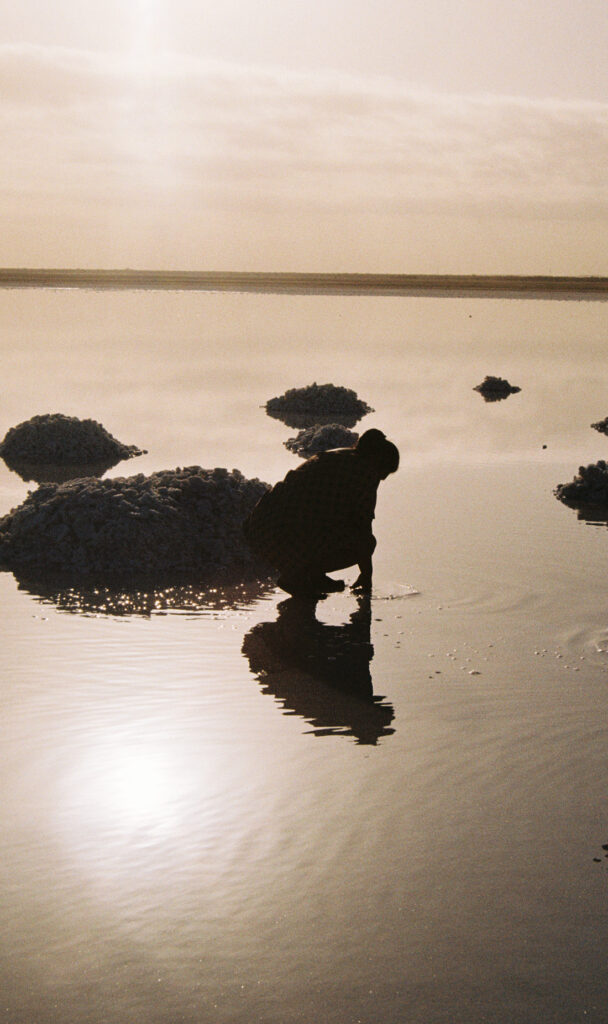
Salt is created by the evaporation of salt water that gets trapped inland when the sea level rises. These large plains contain tons of salt to be harvested by Maria Barliza and other Wayuu people for both self consumption and commerce.
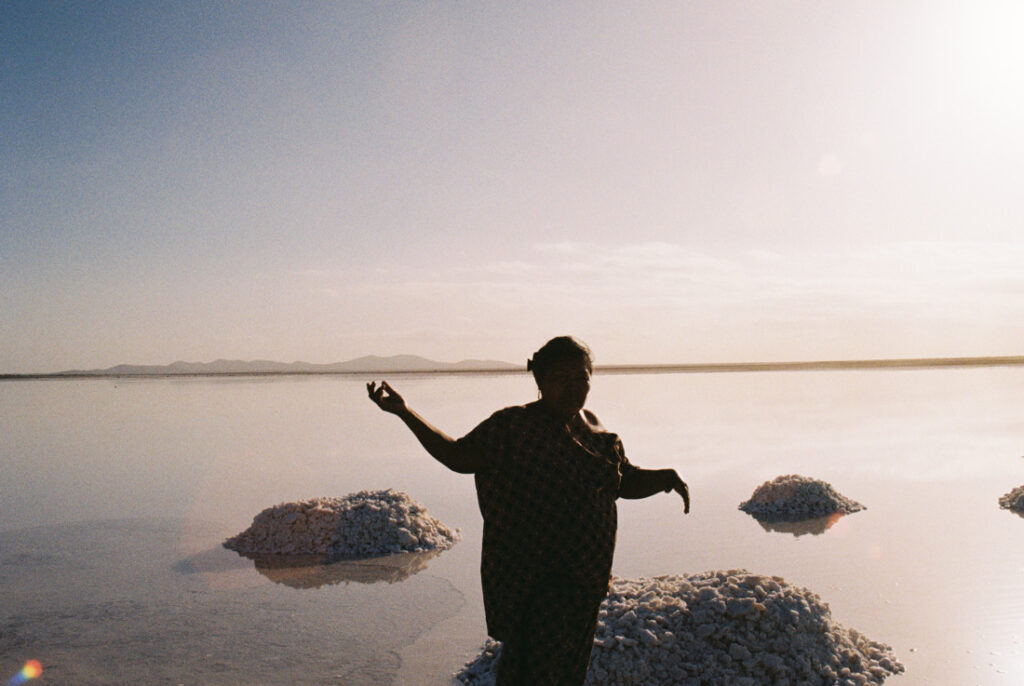
Salt is one of the main sources of income for the community, alongside textile manufacturing and fishing. Although the least profitable of the three, Maria Barliza believes that the practice is key to the communities cultural heritage and economy.
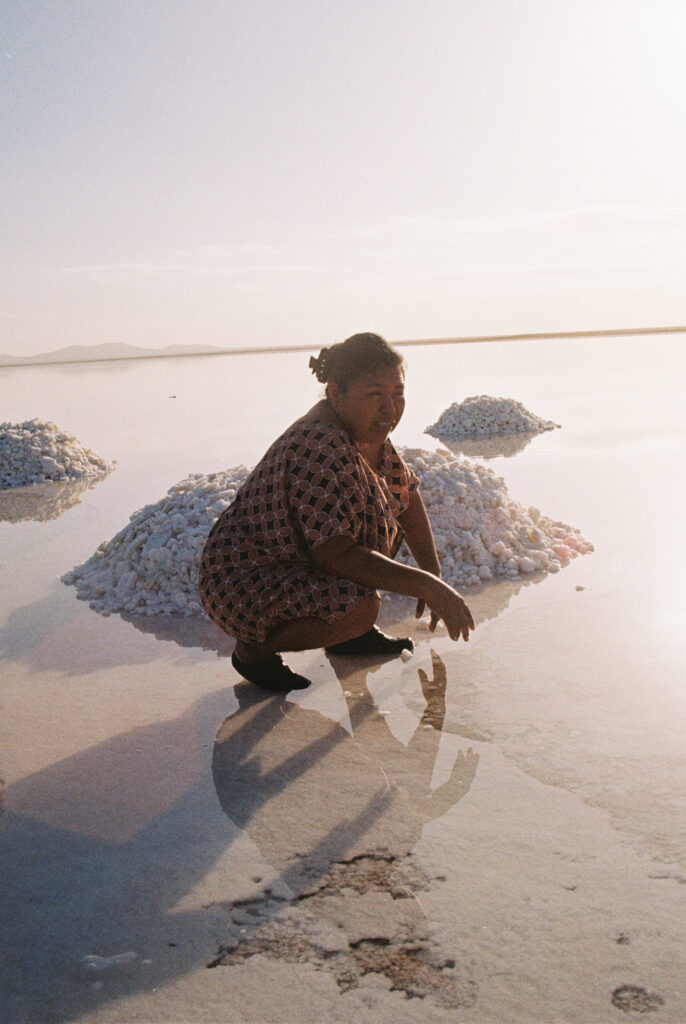
Maria Barliza takes younger girls from the village, such as her grandkids, to the middle of the salt flats to teach them the process, one she hopes will remain alive through generations to come.
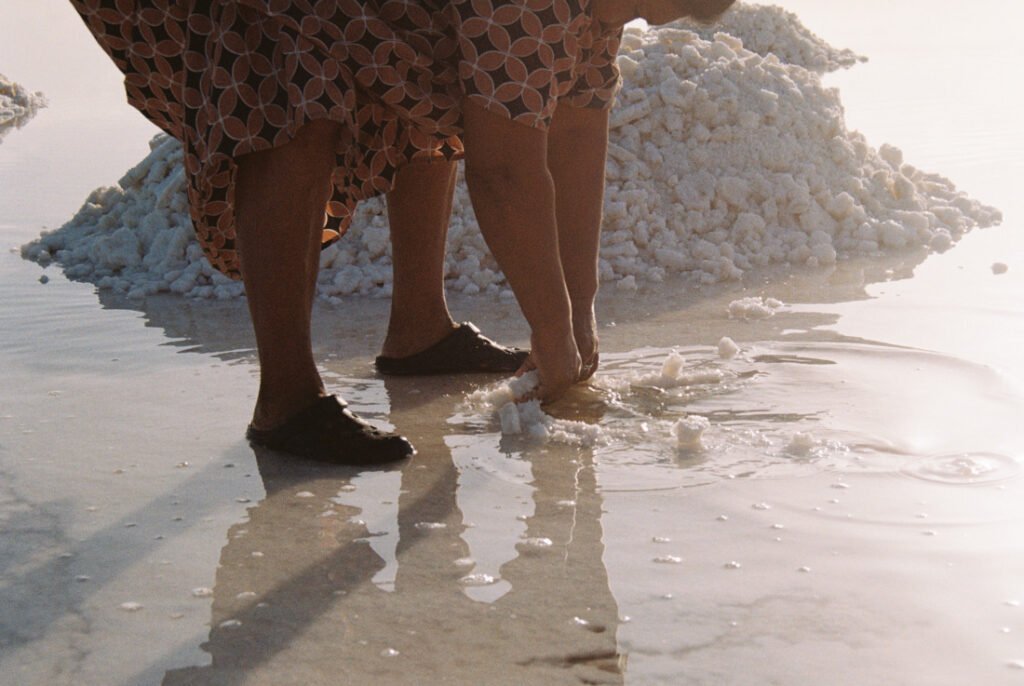
To harvest salt, it is first scrapped off the ground with bare hands. The salt is then thrown into the ever growing piles for it to dry.
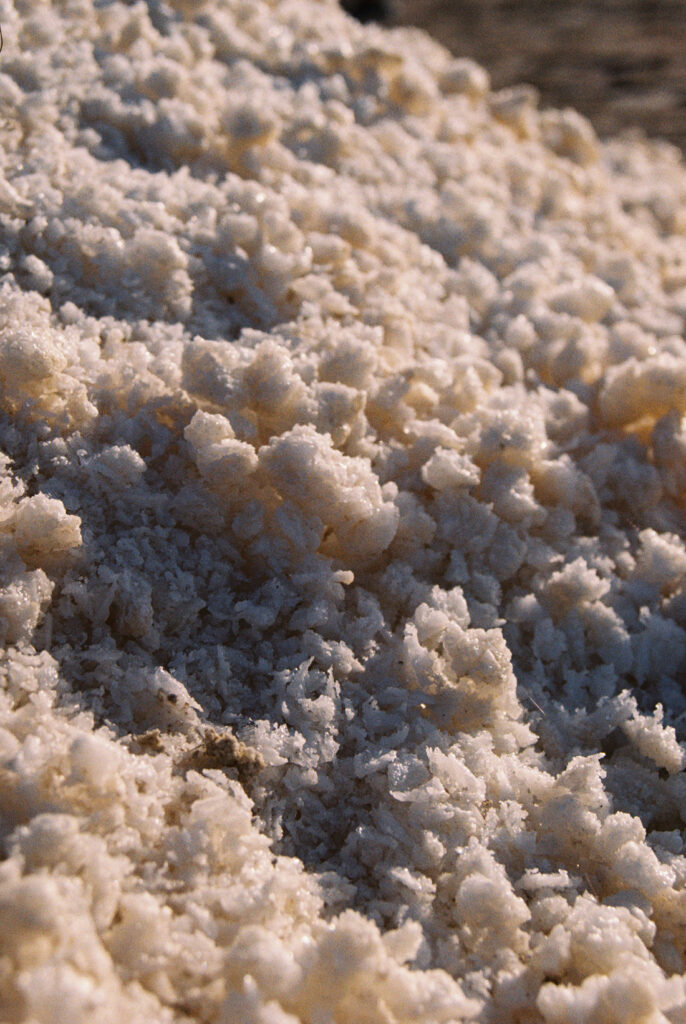
Once the salt is dry, it is packed into bags of 50 kilograms, which after hours and hours of hard labour under the sun will pay just $4,000 Colombian Pesos (COP) or the equivalent of $1.
Textiles
The major source of income for Arema is the production of textiles and handcrafts, usually made by Wayuu women. From giant hammocks called chinchorros that can take up to four months to complete and go for COP $2,000,000 (≈$500), to small handbags called mochilas that are a hit with tourists, handcrafts and textiles are the lifeblood of the community.
Without electricity, their production hours are massively cut to the times of day where the sun is shining, submitting the artisans to extreme heat and strict time frames. With no ability to work through the night or aid their craft with sewing machines, their productivity is subjected to nature’s will, and so is their income.
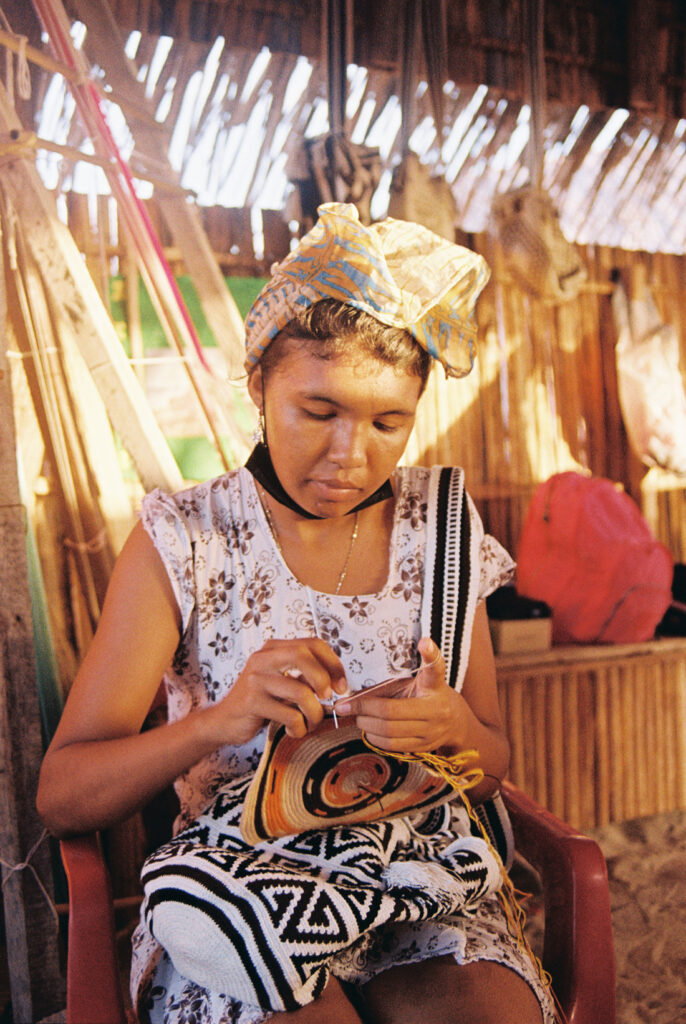
Most women in the community gather in Arema’s artisan center to start sewing and crafting at 6 a.m. Mati Barliza takes about one week to finish a mochila, but depending on the type of threads used, they can take even longer.
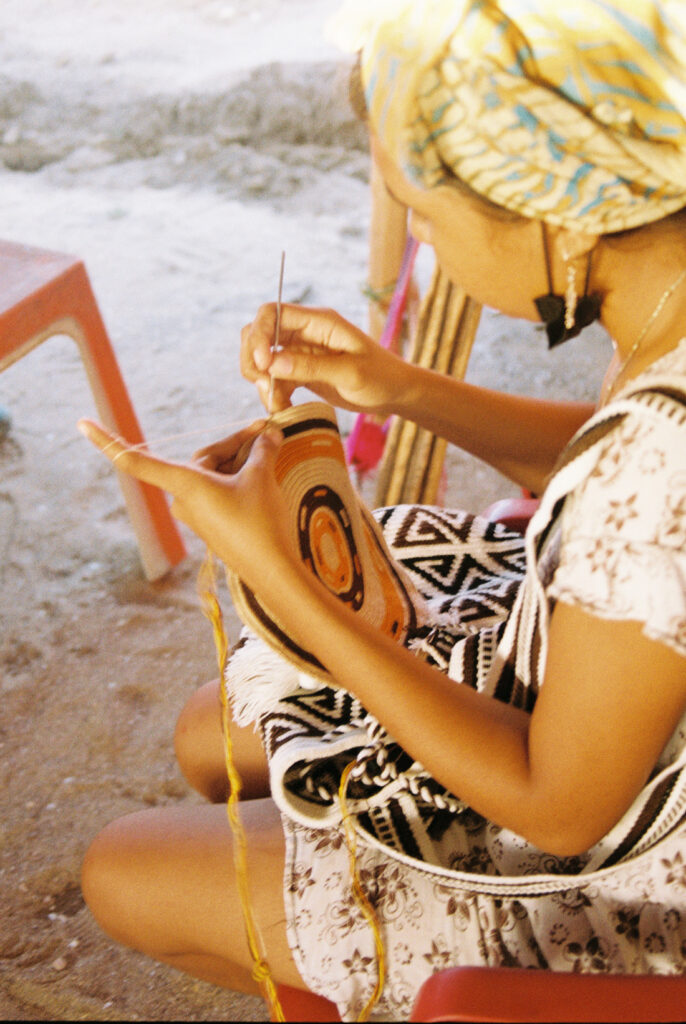
Mochilas can be widely seen all around touristic spots in Colombia, but for Indigenous women, most of the sales go to other members of the community and surrounding towns. Most of the sales are also made in Uribia or Cabo de la Vela, the biggest cities close to Arema.
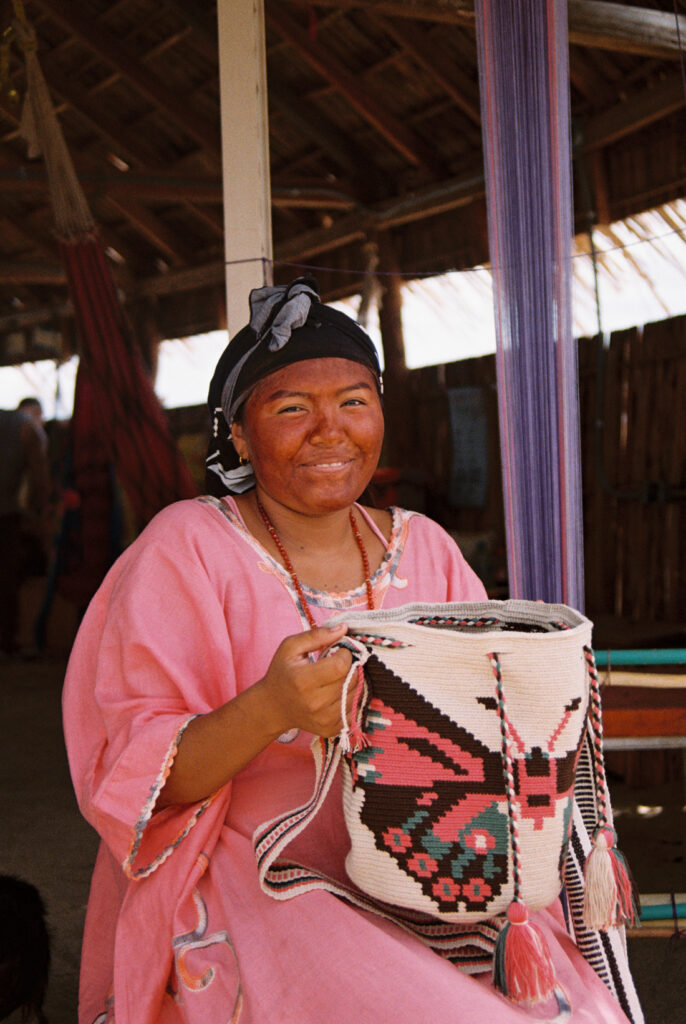
Wayuu women learn to sew from a young age, and although someone like Josefa Barliza doesn’t necessarily focus on this art, the techniques and skills are still something that are kept sharp and alive.
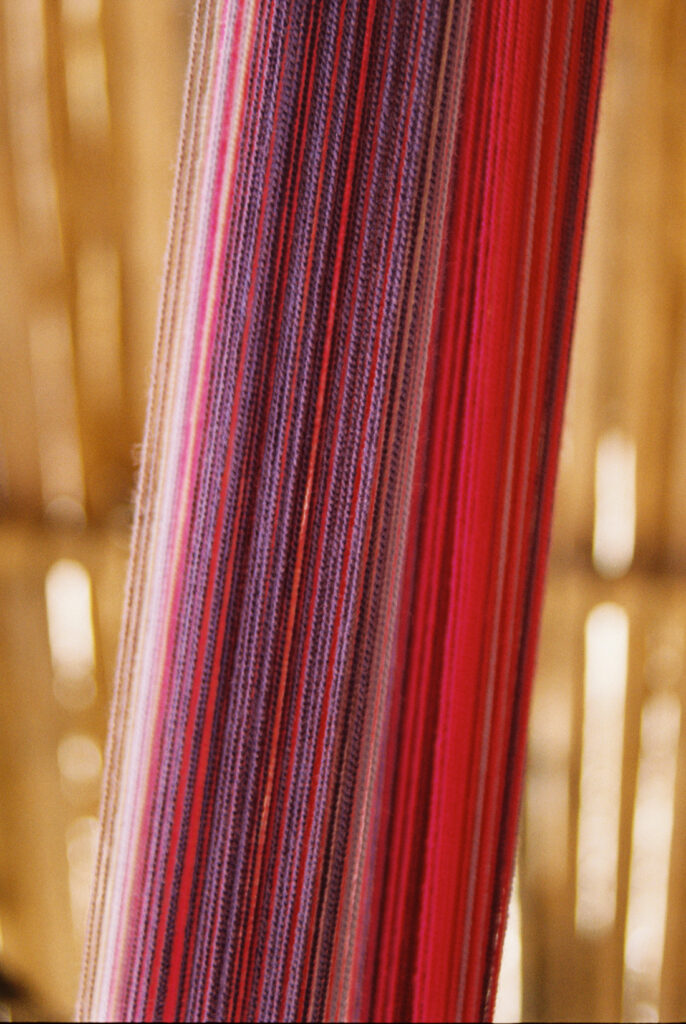
Chinchorros are the other major handcraft that is made by Wayuu people. Made in a loom, high quality chinchorros can use as much as 6 kg of string to manufacture.
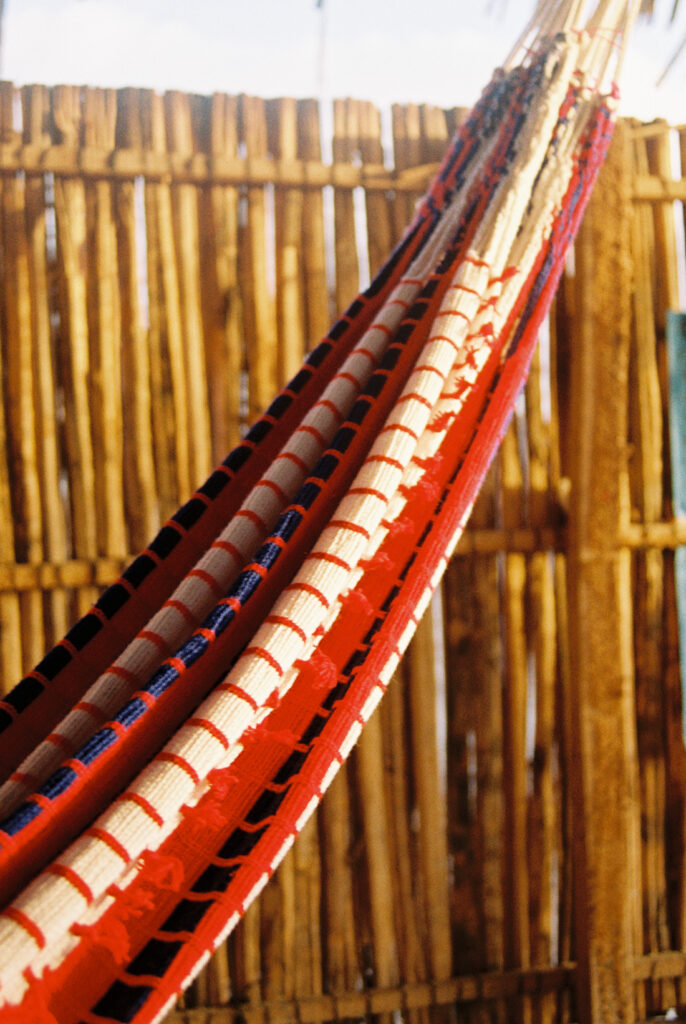
Chinchorros are made with designs drawn from nature, the lines, spirals and colors come from the cacti, oceans and animals that surround the communities. Symbols can range in meaning, going from dreams to light.
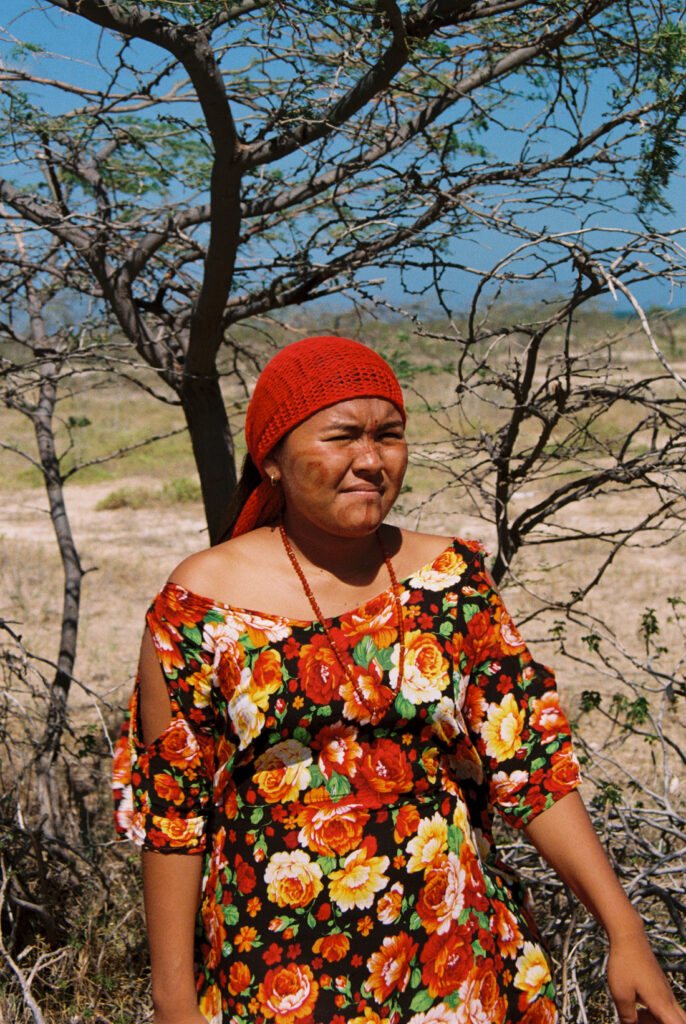
The last major product are “mantas” or the traditional dress of Wayuu women. These dresses are made in different materials, as different occasions require different materials. Red is a sacred color for the Wayuu, and therefore it is reserved for the most luxurious and/or ceremonial attires.
Being from an Indigenous community should not be shameful, in the contrary, it is a sign of strength. We are people that are born with this incredible ability to fight and survive.
Josefa Barliza
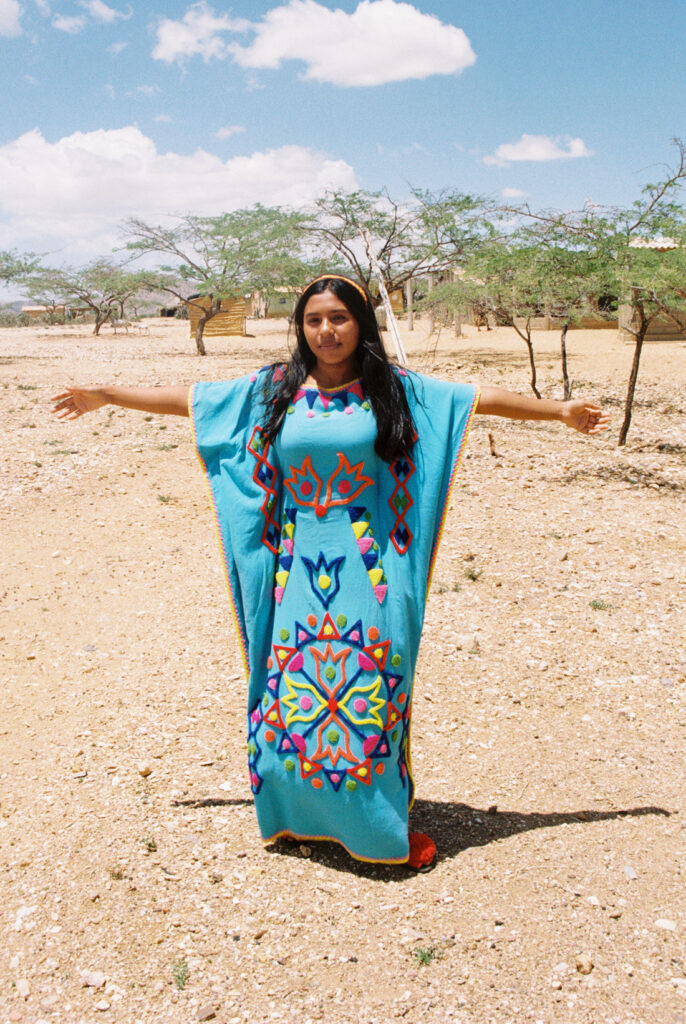
Intricate geometric designs, bright colors and a looser fits are trademarks of more traditional mantas used for religious and cultural ceremonies. Designs and colors which beautifully stand out against the monochrome desert sand.
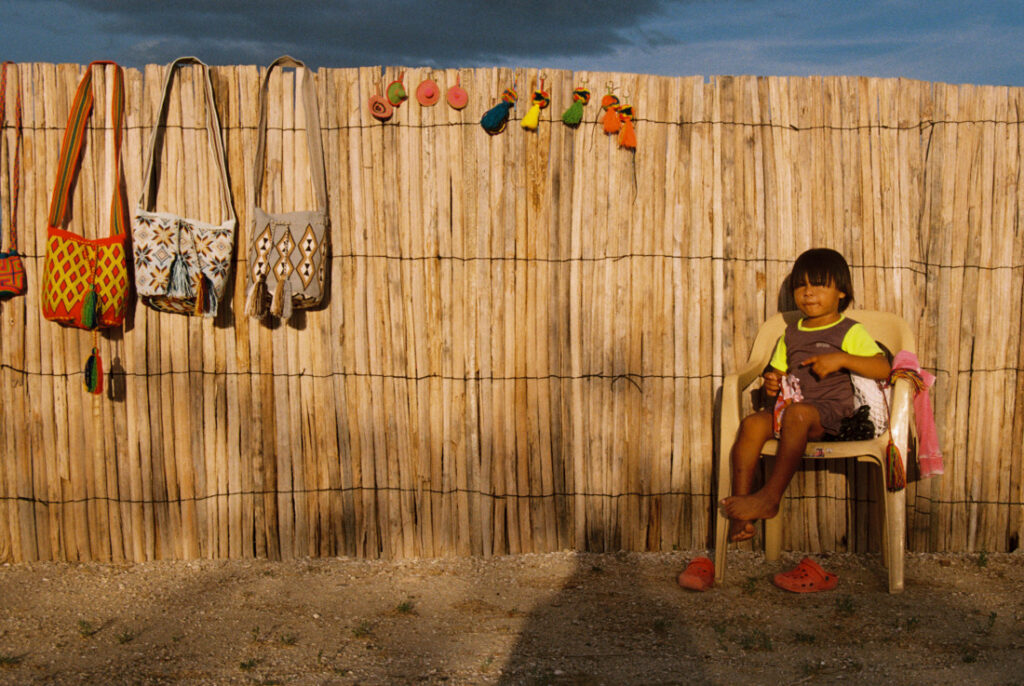
Textiles and handcrafts not only amount for a good portion of the livelihood of the community, but they also represent the historical and cultural heritage of the Wayuu people; a heritage that is imperative to pass onto younger generations.
The Future Generations
The Wayuu people place a lot of importance and meaning on passing knowledge down through generations, preserving their culture. From legends about how Wereke, the spider, taught their ancestors how to sew, to beautiful rituals that exhume their dead so they can find peace amongst the mountains. This is why children are taught traditional customs from an early age, including these stories, dances, handcrafts and the Wayuunaiki language.
However, these traditional teachings are coming at odds with the introduction of 21st century technology and the imminent interconnectedness that has started to reach the village. From social media and technological influence to younger people leaving the village to study around the country, reaching a balance between tradition and progress is more important than ever.
Arema, alongside other adjacent communities, have found a way to merge both currents of thought together and create a constructive equilibrium where one helps the other. Embracing modern technology to make traditions more vibrant and shareable.
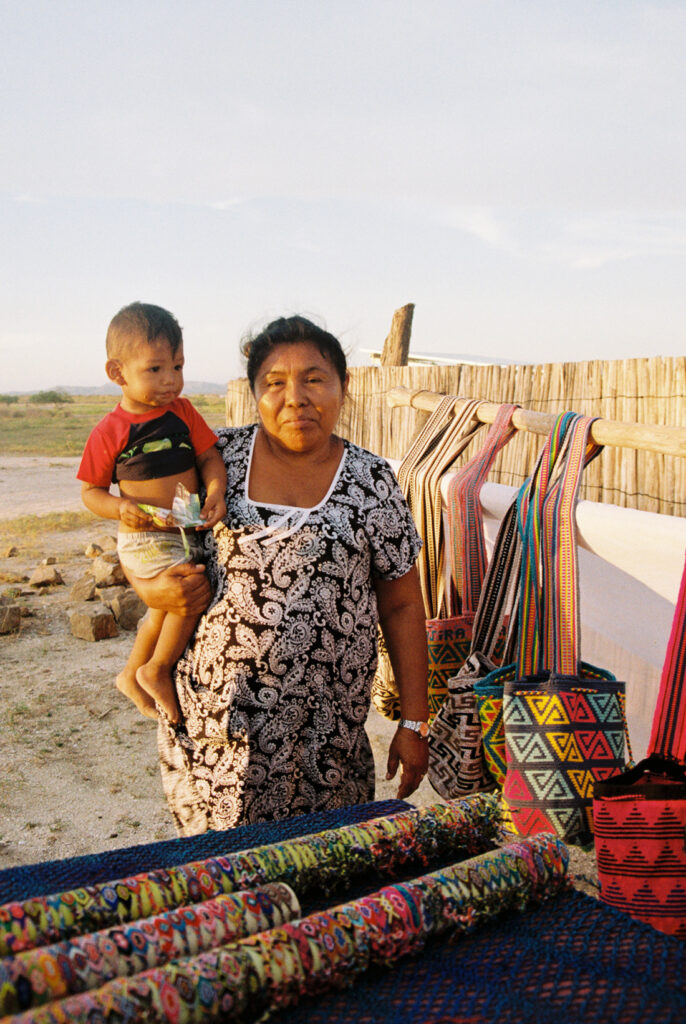
As the head of the community, Maria Barliza is in charge of teaching the kids, specially young girls, the traditions of Wayuu culture. However, she also leads the way in facilitating the inclusion of newer technologies, such as solar panels and electricity in the village. She has set in motion the exponential growth that the village will have, not only economically, but socioculturally.
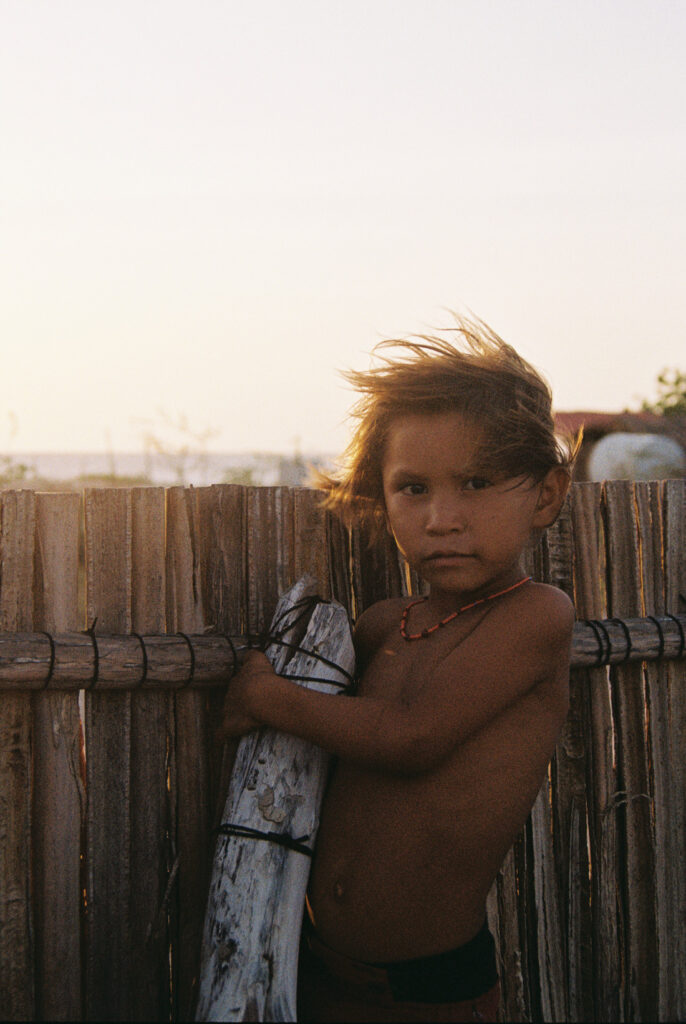
Abraham is one of the several children that constitute the future of Arema. In contrast to his siblings and cousins however, he will spend the majority of his life in an environment where electricity and all of its benefits are easily accessible. This will fundamentally change the way he experiences and approaches the world, spearheading a new generation of Wayuu for the 21st century.
The Wayuu are one of the biggest Indigenous communities in Colombia, and we are known for being warriors and fighters. It has been able to maintain their customs and traditions. Even as years pass, and our Wayuu nation is joined by outsiders, we prevail.
Josefa Barliza
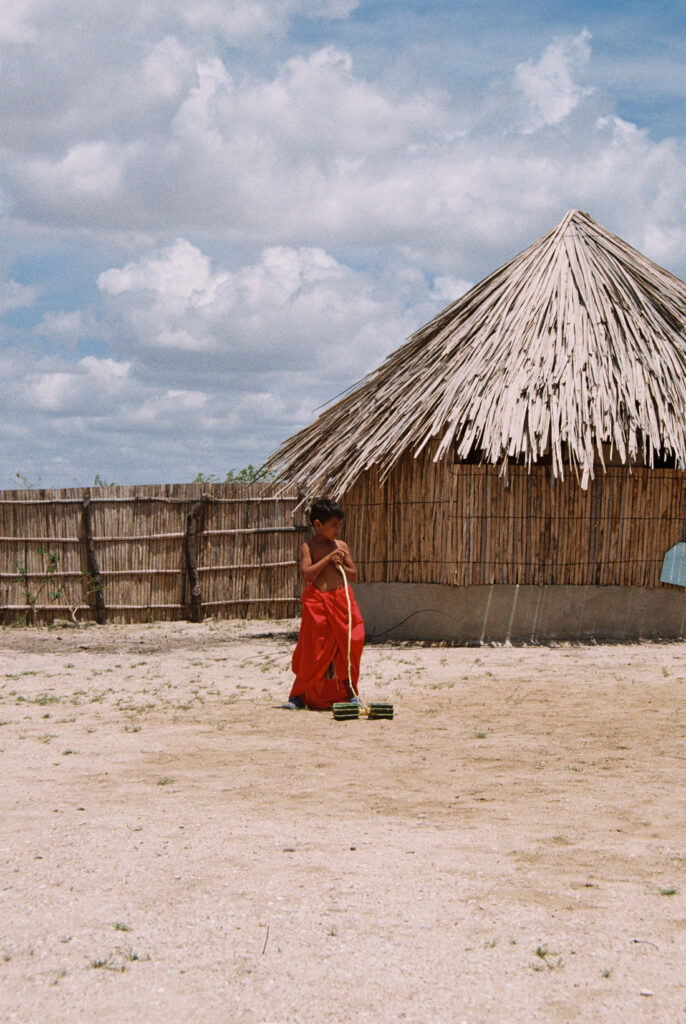
Kids however, still have to be kids. Regardless of technology or tradition, playing is still a fundamental part of a life, and Wayuu games are certainly a part of Arema. Children play traditional “Carrera de cardón,” where kids race with makeshift cars made out of cactus and push them around with a stick.
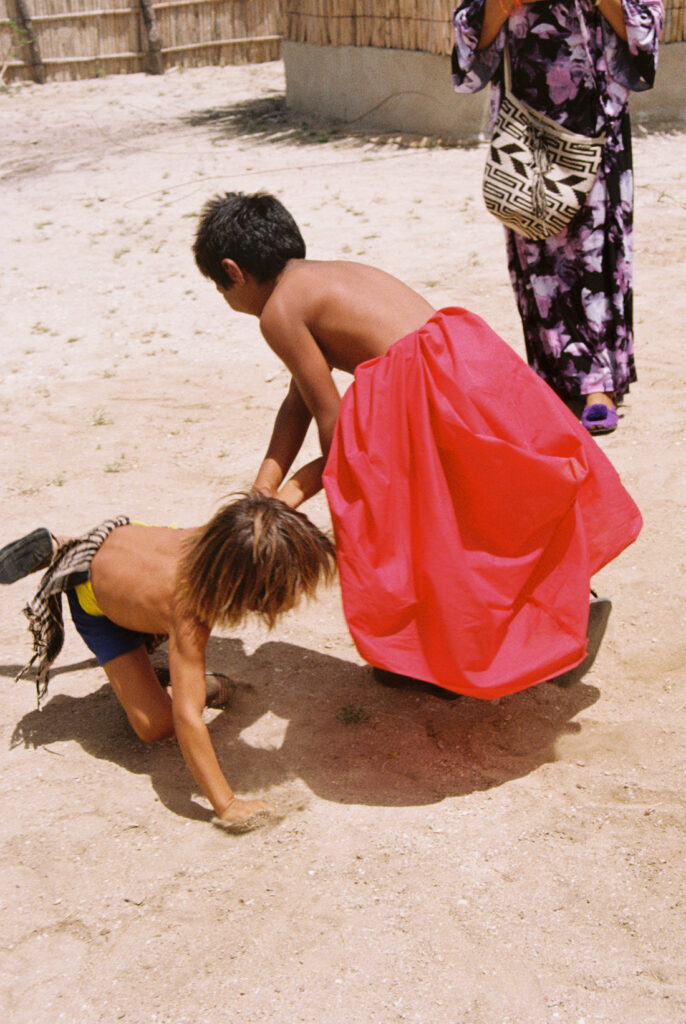
Another popular game, specially amongst boys is wrestling. Girls usually make Wayunkerras, which are dolls made out of clay.
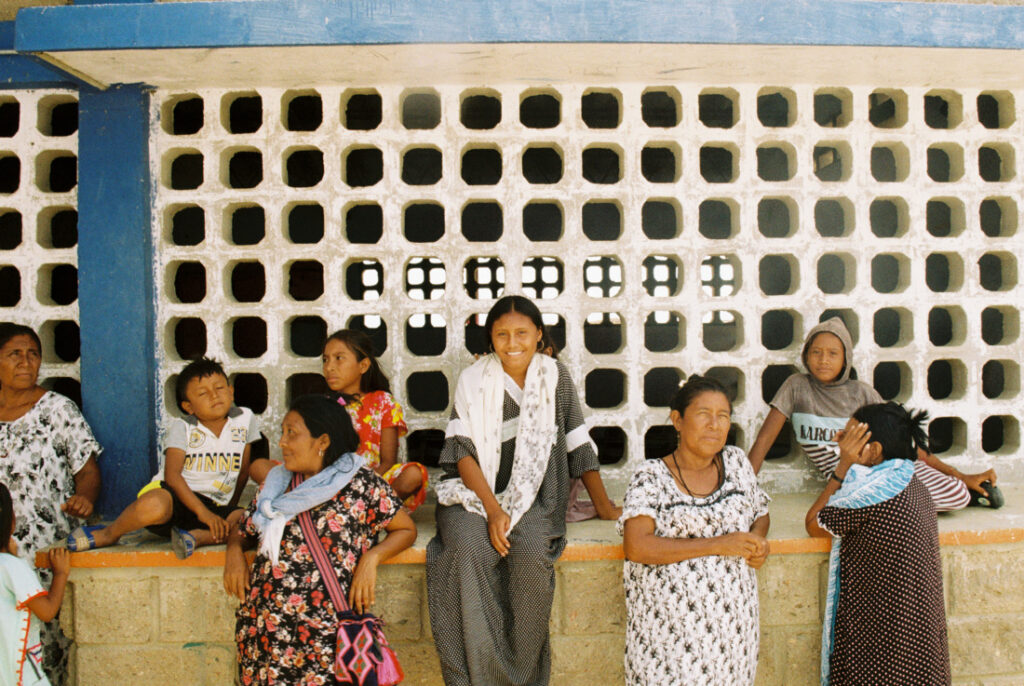
Education beyond cultural traditions is also a key pillar in Wayuu life. Students and teachers from around the Satsapa community find their home away from home further into the desert. Satsapa is a school project that recently got access to electricity through solar panels. This has allowed the school to thrive and grow, using its four batteries to power fridges, freezers, outlets, and even an IT room.
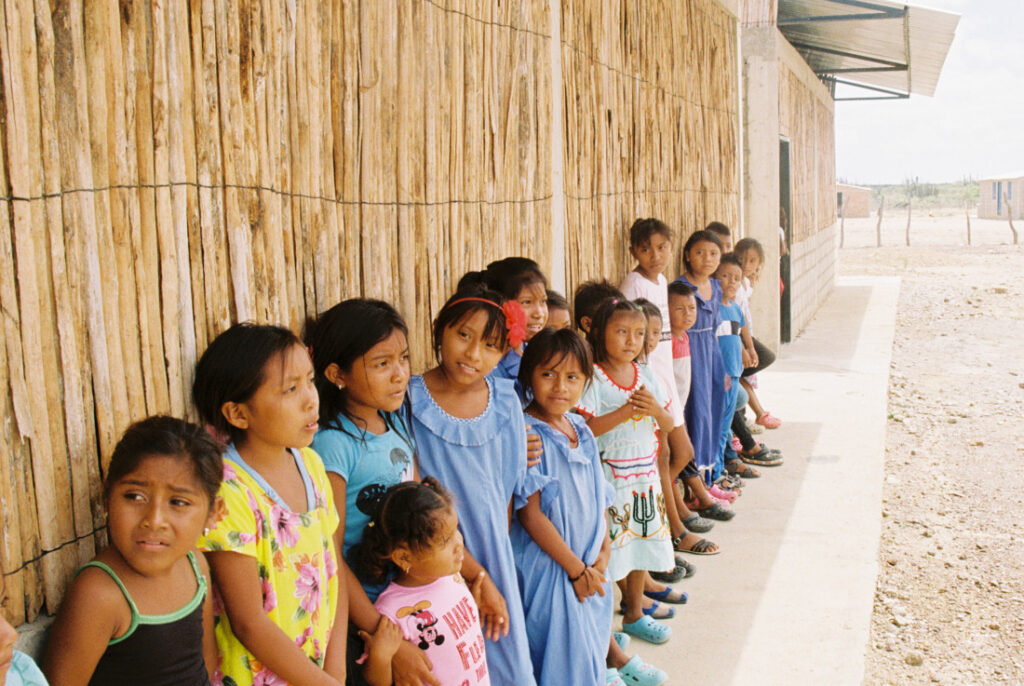
Satsapa went from having around 60 students to more than doubling to 140 in a couple of months after gaining electricity. The classes became more engaging, food was able to be stored and preserved for better nutrition, more information and knowledge could be accessed. The possibilities grew exponentially.
Fishing
Water is a sacred element for Wayuu culture, as it is defined in several different terms. There’s water that comes from rain, which allows us the opportunity to enjoy it inside our Jagüeys… But we are also beach Wayuu, and the sea gives us a lot of benefits such as fishing in the form of food or money.
Josefa Barliza
Fishing is the other major source of income and livelihood for the Wayuu. Not only does it provide money but is also a direct source of food for their diet as farming within the desert is not a viable option. Despite the dangers that navigating the Caribbean brings, children as young as 11 are already spending days at sea, training and learning so they will be able to provide for the community.
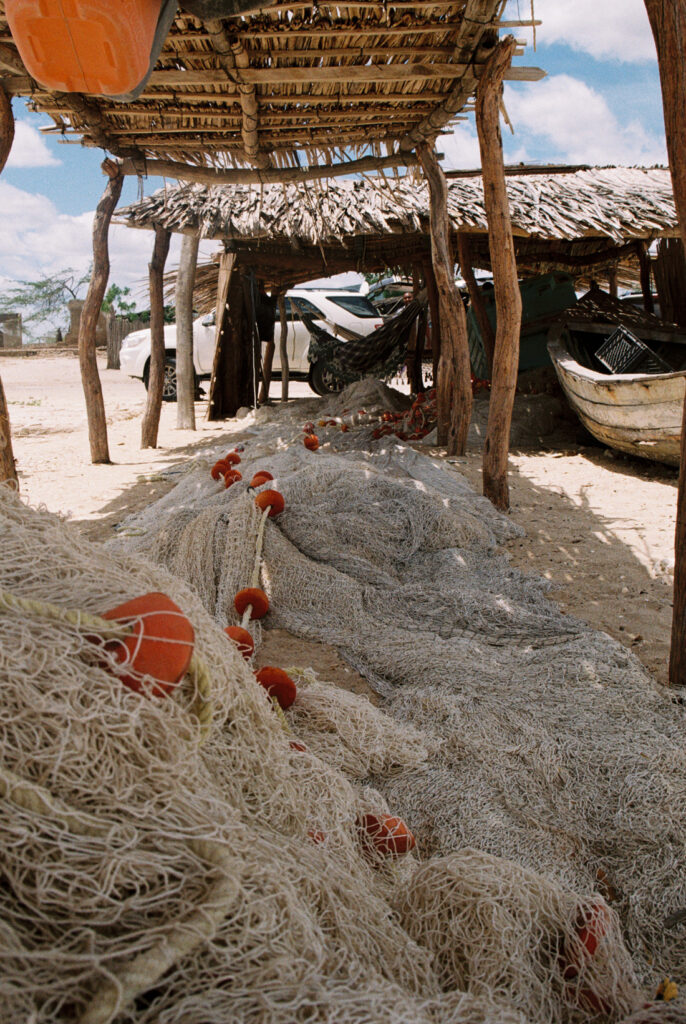
Fishing in La Guajira takes several forms. With a varied sea life, anything from fish to lobsters can be caught in the water. This creates the need for several different fishing methods tailored for the desired catch. Wide nets are cast for schools of fish, while wooden traps are left overnight for lobsters and crabs.
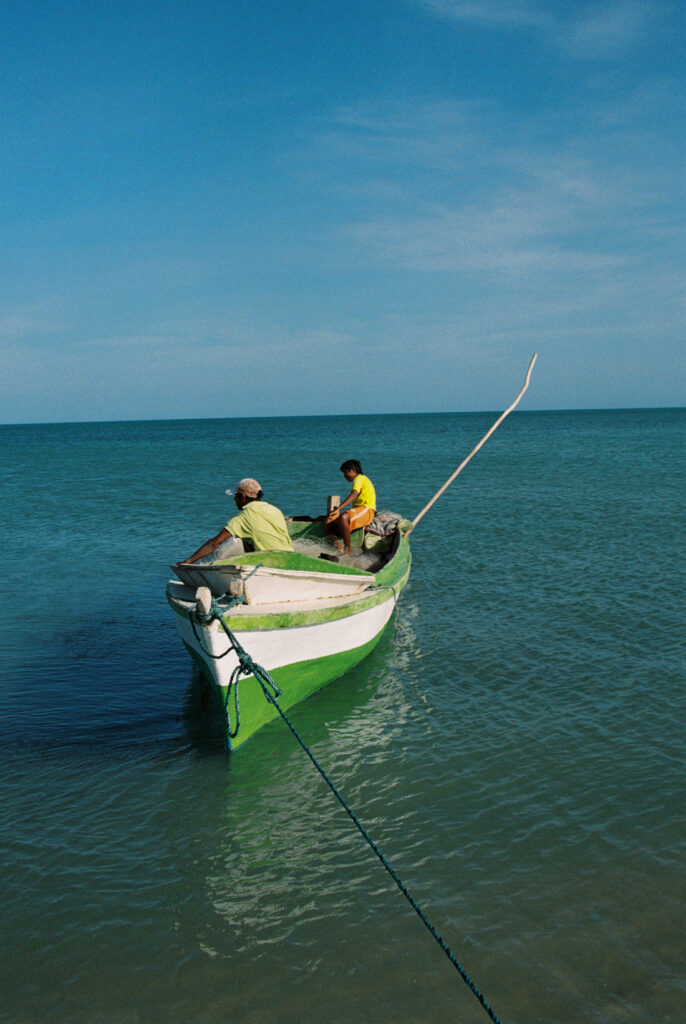
Pablo Barliza and his father Agustin Barliza are one of the father and son duos that fish for Arema. Usually in a group of two or three, they usually leave before sunset and spend the night on the boat sleeping on its floor with only a blanket to keep them dry and warm.
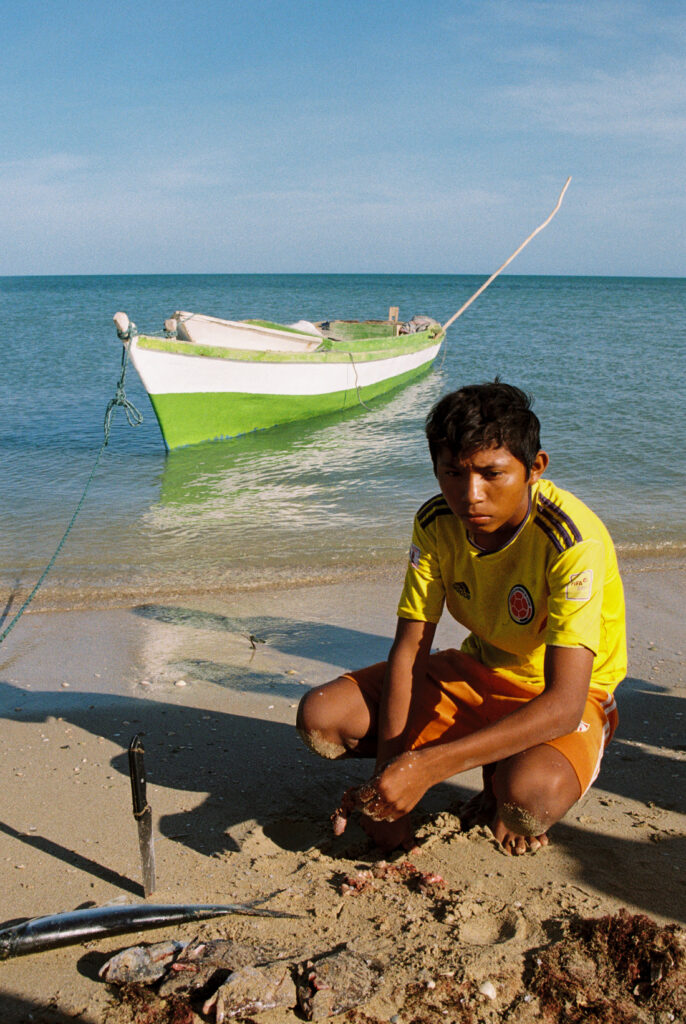
Navigation is done via mountains and landmarks that can be seen with the naked eye in the horizon as there is no access to GPS or any sophisticated navigation techniques. Pablo is usually one of the people that does the fishing while his dad, the captain, would be calling the shots.
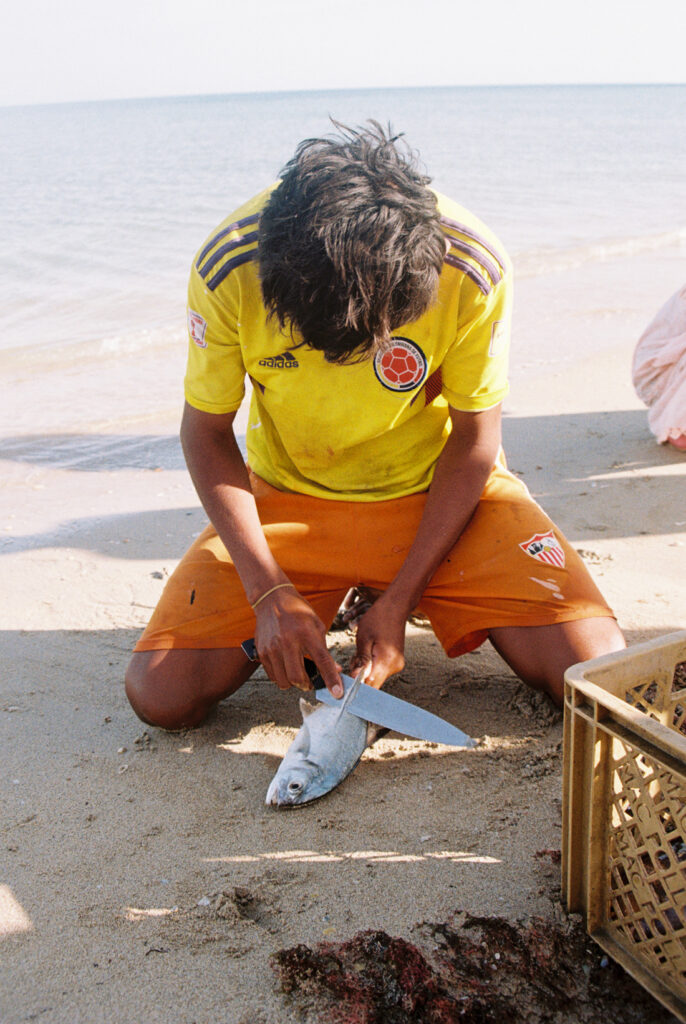
A night out fishing can go two main ways. Either they catch just enough to feed themselves for a day, or they have a “miracle catch,” where they have enough to sell in Uribia or Cabo de la Vela for a profit.
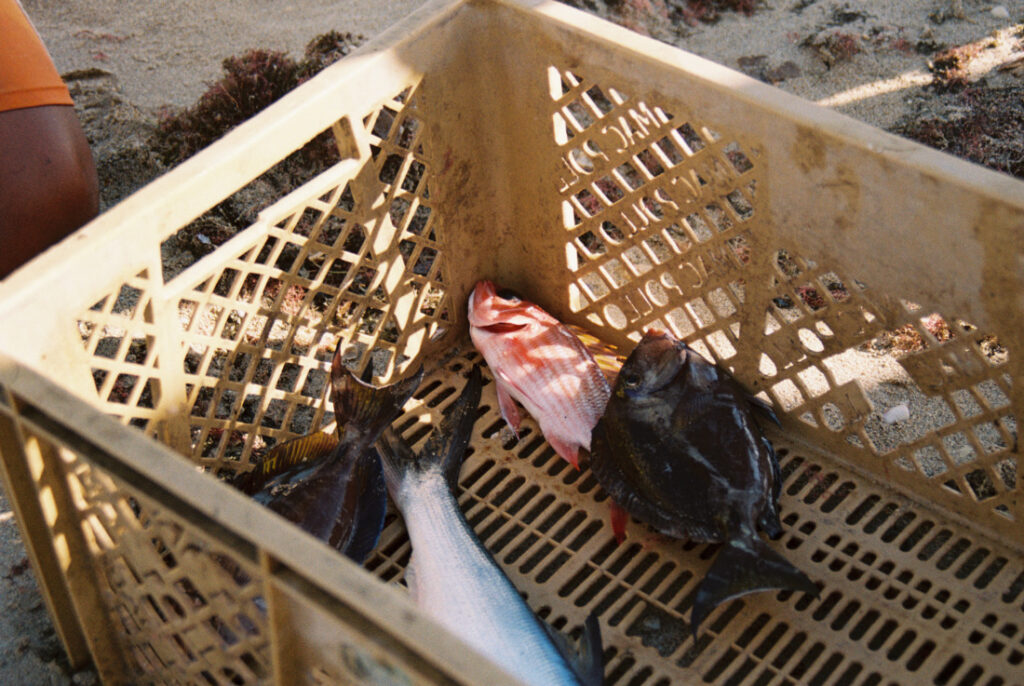
Fish caught range in selling price depending on the species and size of the fish, they can go for a couple thousand Colombian pesos to around tens of thousands ($1-$10). Some popular fish species are Groupers, Pargos, Barracudas, Red Snappers and Blue Runners.
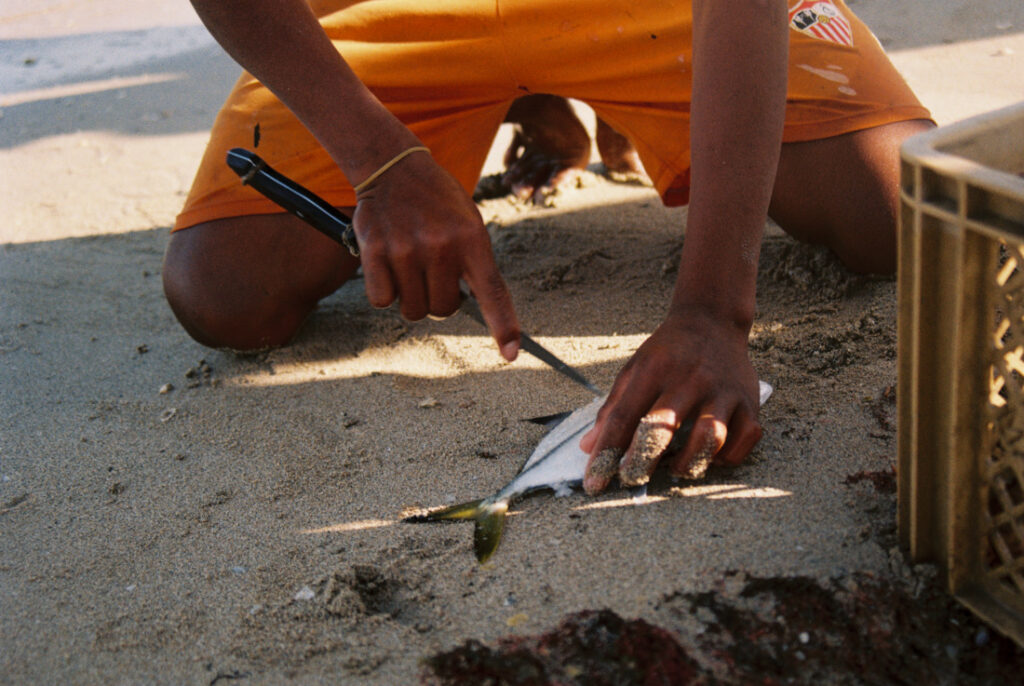
This specific catch only provided a couple of fish that would be used to feed the village for a day. Pablo starts these preparations by cutting and gutting all the fish as soon as he got off the boat. At the moment, the community will have to eat all the fish today, as there is no refrigeration, and therefore, the village can’t stockpile food or fish to sell and are at the mercy of the ocean. That is soon to change with the addition of two freezers to Arema’s community center. Here fishermen will be able to store fish, as well as make ice cubes to sell.
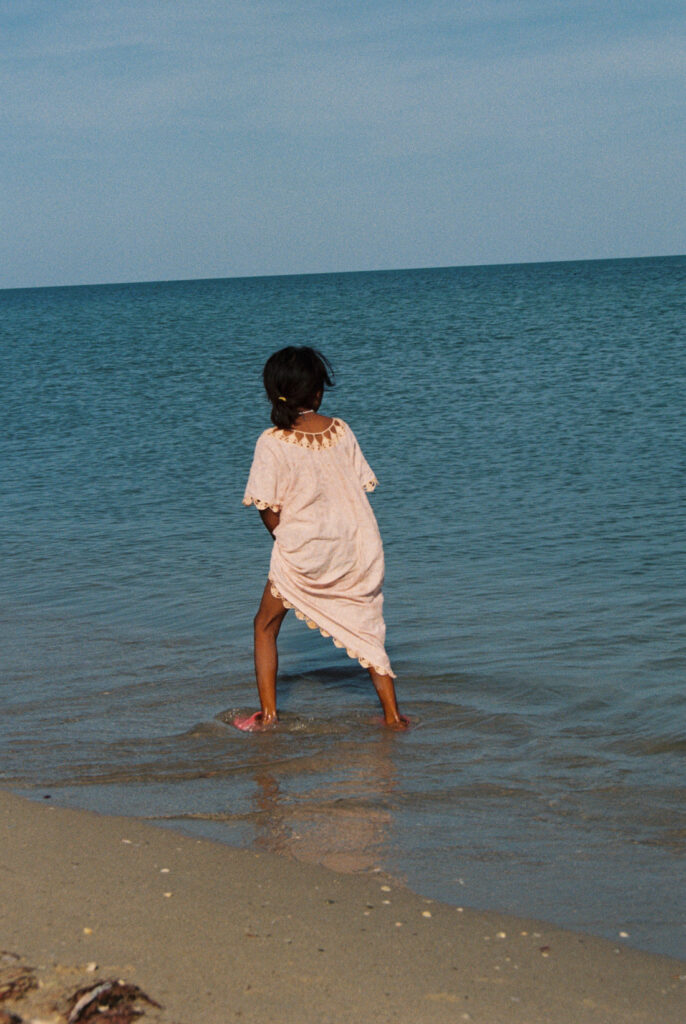
Although not a source of drinkable water, the ocean has been key to the survival of the Wayuu people. They have been able to brave the uncertainty, and adapt to its changing yield of success and defeat, following its waves, wherever they may lead. Today, more than ever, they will be able to tame the ocean a little bit more, with access to electricity.
Reflections
The changes that Arema is about to experience, as great as they are, are not the norm. Arema is one of the selected communities that have been able to receive the aid from organizations like GivePower Foundation to be able to build these energy and water solutions. Although there will still be a lot of communities throughout La Guajira that will not have access to these services, there are ways in which they can also refract alongside communities like Arema towards a brighter future through mutual cooperation.
As more and more projects are propped up around La Guajira, the domino effect that is created by the mutual cooperation within the wider Wayuu community will reflect on every aspect of life. Creating small nodes all around the department will create a naturally occurring shared economy giving adjacent communities an opportunity to also store their food, get and keep drinking water, expand their knowledge through the internet and have access to technology that will aid in professional and leisure activities. The possibilities are endless.
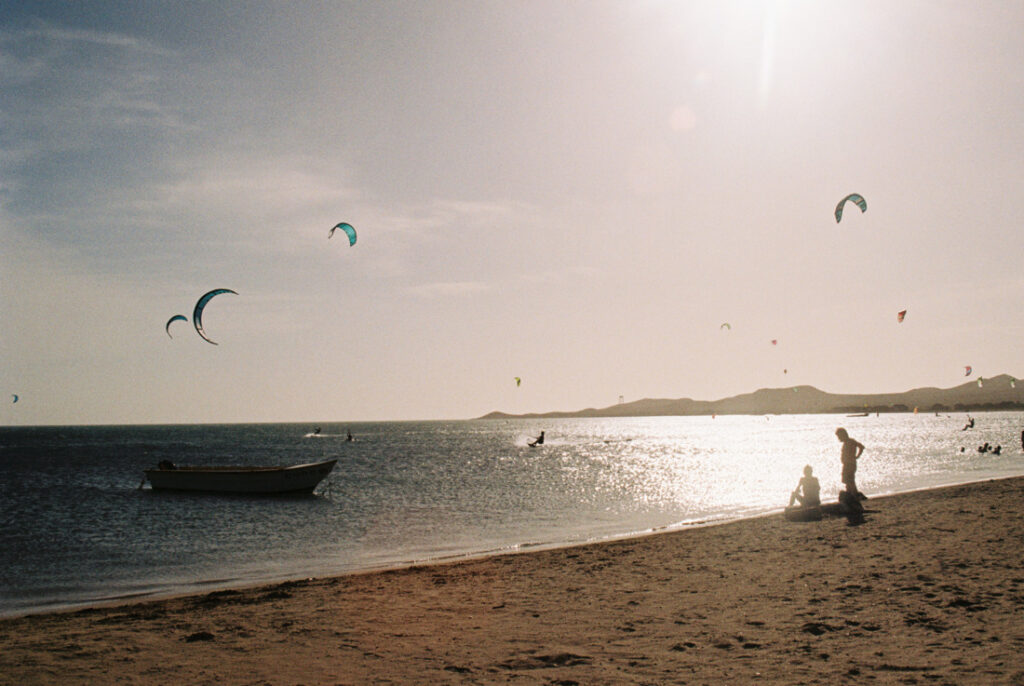
Communities having access to water and electricity opens them up for sustainable tourism. Windsurfing, boating and all around beach leisure could become sources of income for the communities. Fundamentally turning the driest department in Colombia into a bustling oasis.
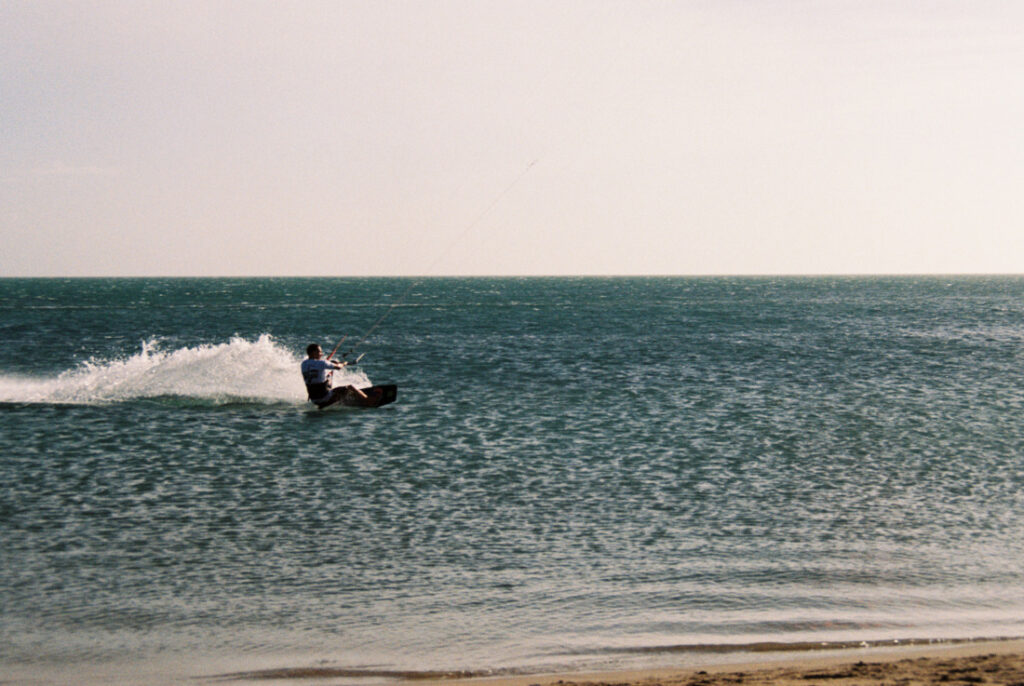
The future of the region looks extremely promising. With La Guajira’s prime tourism spot, Cabo de la Vela, being home to a lot of world renowned kite surfers and competitions, the communal effort to put La Guajira on the world stage is only taking off.
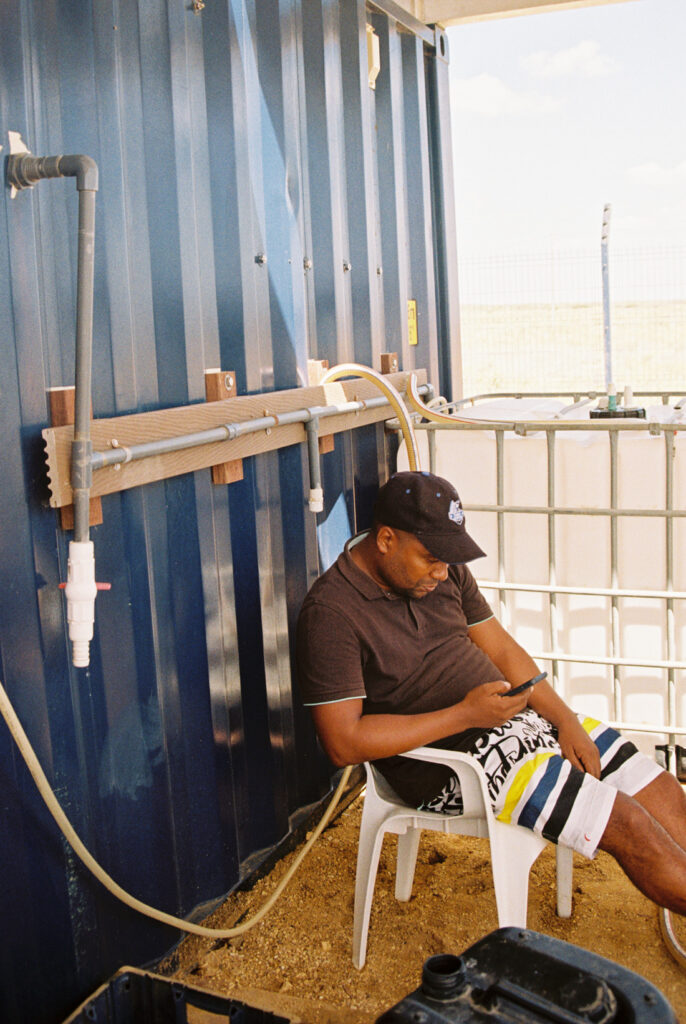
None of these feats or milestones, such as putting La Guajira on the map or sharing Wayuu culture with the world, would be possible if not for sustainable and clean access to drinking water. Throughout La Guajira there are some water treatment and desalinization plants such as the one by GivePower Foundation. Costing around $90,000, this water plant can produce 6,000 liters per day and provides water for the adjacent communities for COP $40 ($0.001) per liter.
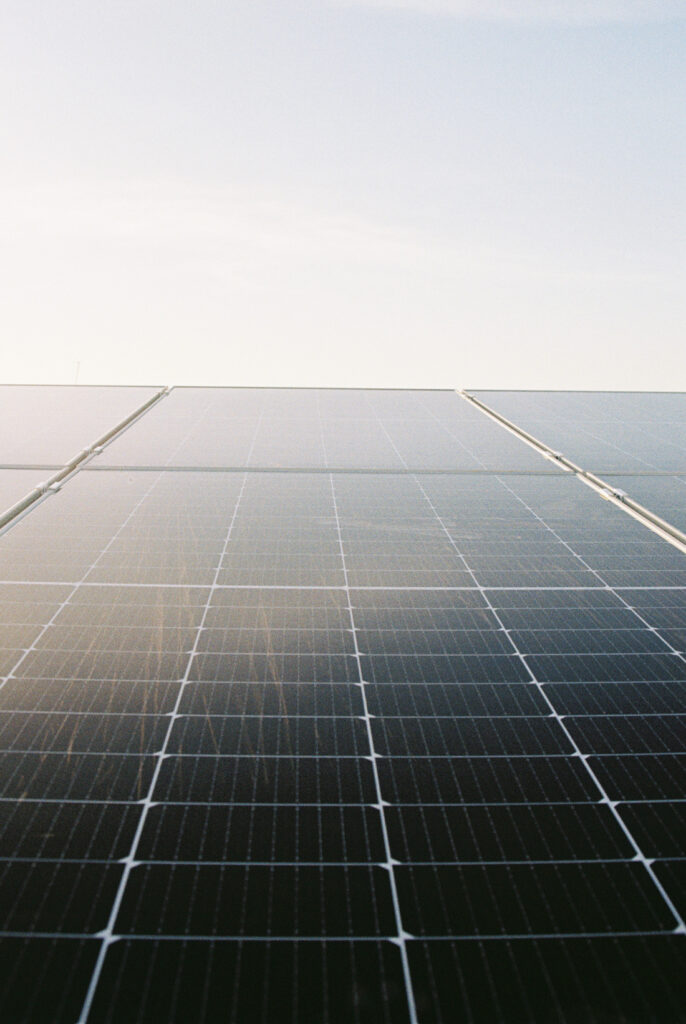
The six solar panels installed in Arema will be able to generate 2,700 Watts and store this energy in three batteries that can last through the night. This will power: two freezers, a fridge, a television, a sewing machine, and seven outlets. And after the power is on, all their lives will change forever, and they will enter into a reality, where the day doesn’t end at sunset, and ideas can go beyond the horizon.
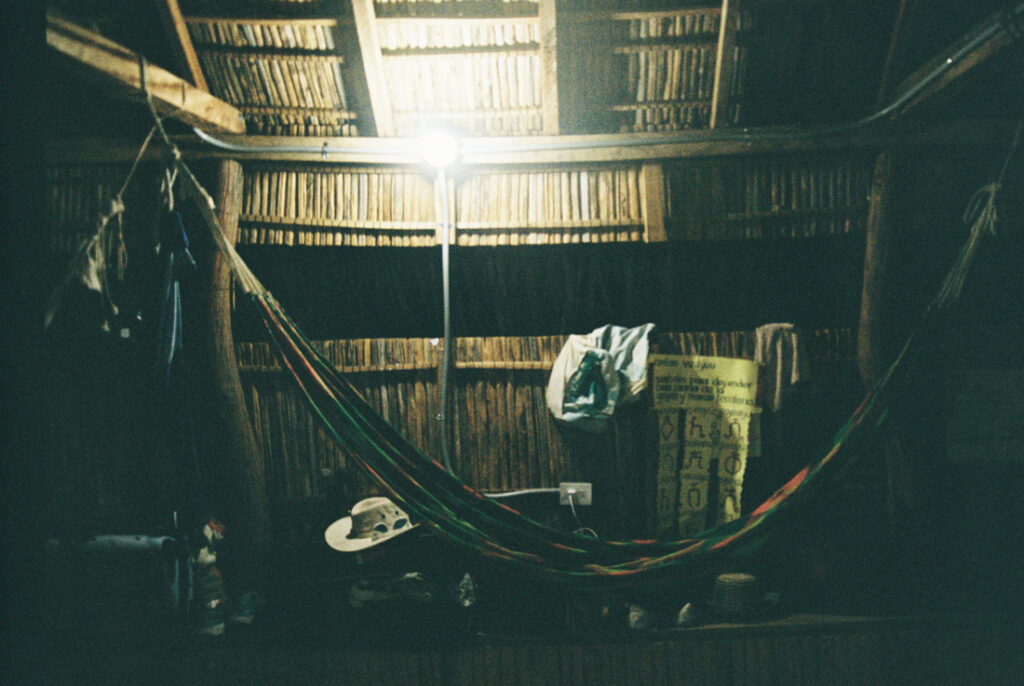
This entire photo essay was shot on 35mm film, no charging needed. A medium which without a flash, will not be able to take pictures at night. Just like any activity in Arema, photography ended as the sun went down. Now, be it art, entertainment or human connection, will be able to prevail; till the crack of dawn.
For me, regardless of the obstacles and the fact that we aren’t born with everything we would need, that is what helps us become good people. It teaches us how to fight, to cherish what we have; be it light, water, our land or our families.
Josefa Barliza


